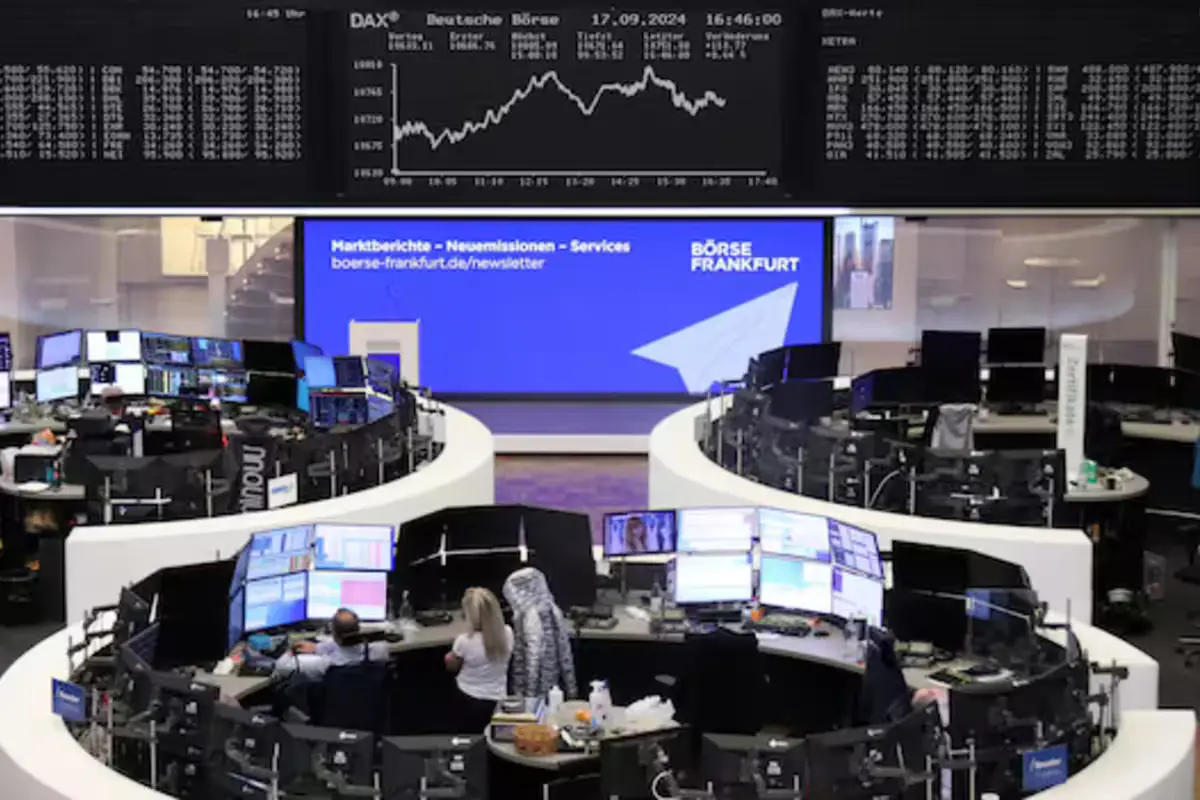
German Stock Exchange. Credit- Internet
With experts seeing signs of moderation in inflation and growth trend, Fed’s interest rate cut comes in picture in first revision to interest rate since 2020.
Keeping the potential state of inflation in view, the Federal bank had tightened the interest rate.
Lowering the borrowing cost on September 18, Wednesday, Federal Bank announced the cut of 0.5% in the benchmark interest rate from 50 basis points. The policymakers voted in favor of keeping the US Central Bank’s lending rate to between 4.75% to 5.00%.
As inflation has come down from its peak two summers ago, Jerome Powell, Fed chair, signals a shift in Fed’s focus to keeping the job market solid and the economy out of recession.
The Fed’s action has two major benefits for the financial markets. It boosts pricing for a variety of assets and releases some of the brakes on the economy, which has been flagging due to increased interest rates.
Why Federal Bank Cited Dip in Inflation Behind Rate Cut
The relationship between interest and inflation is a match made in heaven thing. They move in the same direction as they soar and fall. One of the cited reasons is the Supply and Demand principle.
Interest rates are raised to fight back the inflation as when there is more money in the market due to low interest rate, the demand increases but the supply remains relatively constant, causing surge in the price of the commodity- resulting in inflation.
For instance, countries like Turkey and Pakistan are using higher interest rates to combat inflation. Currently the benchmark interest rate in Turkey and Pakistan stands at 50% and 17.5% respectively.
As US inflation came down nearly two years ago from its peak, the Central Bank of US lowered the interest rate, shifting focus to the Job market and recession.
Why Should India Cheer the Change
Experts argue that Indian stock could attract higher foreign investor inflow this year, following the interest rate cut by half a percentage.
CEO of Avendus Capital Alternate Strategies, talking to a media outlet, argued that emerging markets like one of India generally attract more foreign money amid dipped interest rate cycle, FIIs borrowing cheaper at home and investing more in higher yielding, riskier emerging markets. The analysis is based on the factor that when the Fed eases policy, the dollar tends to weaken against Asian currencies and the US bond yields fall. The weak dollar drives investors to invest in markets with higher return and stable currencies.
Lower borrowing costs could encourage US firms to spend more. This could revive India’s IT sector if firms opt to spend more on technology as the US is the biggest market for India’s IT services sector. Fortune 500 companies, clients of India’s IT service, had clamped down on spending for many reasons including higher cost of borrowing. Now that the interest rate is lower by 0.5%, the revival of India’s IT sector is expected.
Also Read: Explained: Trump-Harris Presidential Debate, Key Points
Does Market Trend Anticipate Advantage
S&P(market capitalization-weighted index of 500 leading publicly traded companies in the US) registered a 1.7 percent jump attaining the new height topping it’s all time record in July. While the Dow Jones industrial average leaped 1.3%, Nasdaq led the market marking 2.5 percent jump.
continent-wide STOXX 600 index, covering 17 European countries, is a broad-based index that tracks the performance of the 600 largest and most liquid companies in Europe, closing up by 1.4%, marking the highest closing level in more than 2 weeks.
Germany’s blue-chip benchmark, jumping 1.6% to 19002.38 points, marked an all-time closing high.
UK’s blue-chip FTSE 100 ended 0.9% higher, while the pound strengthened 0.5% against the dollar.
Asian Markets including Japan and India soared, following the Fed’s rate cut by half a percentage point.
Japan’s Nikkei leaped by 2.5%, driven by the manufacturer’s shares. Hong Kong’s Hang Seng, the Shanghai Composite index and South Korea’s Kospi gained 1.9%, 0.7% and 0.2% respectively.
However, India market reacted in variation, Nifty 50 and S&P BSE Sensex reacted positively gaining 0.15% and 0.29% respectively at the time of closing. On the other hand IT metals, oil and gas ended lower on Thursday. The concerns over global slowdown amid higher than expected cut caused decline in Nifty Midcap-100 and small cap-100 of 0.67 to 1.27%.
To read more such news, download Bharat Express news apps






















